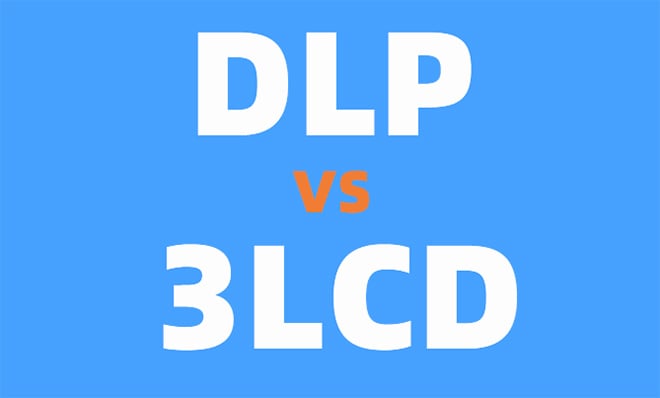3LCD color performance is more bright, good reproduction, but for some movies more black and white field slightly worse than the picture


What are the differences between DLP and 3LCD projector technology? This guide will compare the DLP and 3LCD in detail.
The current mainstream projectors use 3LCD or DLP technology. The traditional projectors mostly adopt 3LCD technology while the newly launched home smart projectors adopt DLP technology.


3LCD projectors deliver brighter color and do well in color reproduction, but for some movies with more black and white field, its performance is slightly worse than the picture produced by DLP projectors. DLP projectors deliver high contrast but relatively less vivid colors.
LCD (liquid crystal display) projector contains 3 independent LCD glass panels, respectively, for the video signal of the three primary colors of red, green, and blue. Each LCD panel contains tens of thousands (or even millions) of liquid crystals that can be configured to open, close, or partially close in different positions to allow light to pass through.
Each individual liquid crystal essentially operates as a window-blind, representing a single-pixel (“pixel”). When the red, green, and blue colors pass through the different LCD panels, the liquid crystal opens and closes instantly based on how much of each color is needed for that pixel at that moment, which modulates the light to produce the image that is projected on the screen.
DLP (Digital Light Processing) is a proprietary technology developed by Texas Instruments. It works on a very different principle from LCD. Unlike a glass panel that allows light to pass through, a DLP chip is a reflective surface made up of tens of thousands (or even millions) of microlenses. Each micro-lens represents an individual pixel.
1. Brightness Comparison
The DLP (digital light processing) is based on refraction, generally relying on red, green, blue, and white (generally commercial only while home theater without) several color wheels, which can only refract a color at a time. 3LCD relies on transmission, and it can transmit red, green, and blue three colors simultaneously. When you want to see yellow, DLP needs a period of time to refract red and the other period of time to refract green, but 3LCD transmits red and green synchronously. That’s why 3LCD colors are brighter and more vivid.
That’s why commercial DLP projectors have added a white color wheel to improve brightness, but this practice also results in not full colors. As DLP can not refract multiple colors at the same time, it causes inefficiency, resulting in DLP requiring more powerful bulbs compared with other projectors with the same brightness.
2. Color Comparison
The brightness of each color is standard, too high and too low is not right. If the projector has a color management function, it can achieve the standard color after professional tuning. As 3LCD has higher default color brightness, the tuning of a DLP projector is relatively easier than a 3LCD projector.
3. Contrast Ratio Comparison
Light and dark rely on the grayscale, which is determined by the gamma curve. High contrast and more grayscale is the most ideal effect. Relatively speaking, the DLP contrast is high and more grayscale.
4. Sharpness and Pixel Comparison
The sharpness of 3LCD is good, but the pixel structure is obvious, that is, the proverbial crystal lattice. So DLP has no pixel structure? In fact, DLP also has pixel dots, but the good thing is that the DLP “pixel gap” is small, that is, the pixels are large, the gap is small, the lattice looks less obvious, and the naked eye looks more comfortable.
5. Life Comparison
3LCD has the problem of aging LCD panels, therefore, relatively speaking, the service life of a DLP projector is higher than that of 3LCD.
6. 3D Effect Comparison
3LCD is more prone to crosstalk than DLP because the LCD has a delay. But even so, objects with large contrast between light and dark will still vaguely appear in heavy shadows. And DLP is very perfect so that you do not feel.
However, 3D requires high brightness. With poor shading and low gain screen, you need to pay special attention to the brightness to get large screen size. When choosing a DLP machine, one must choose the actual test brightness enough models.
3LCD: It has the advantage of high brightness, easy to install, higher color brightness, and good sharpness, but the pixel structure is obvious and 3D is more likely to crosstalk.
DLP: It brings more natural color, high contrast, and more grayscale, no pixel dot, no crosstalk in 3D, and longer service life.
Overall, DLP is a little more progressive than 3LCD.
2. If the ambient light is strong, the screen has poor shading, but want to cast a large screen, you can only choose 3LCD. For example, the office, or classroom with the traditional projector.